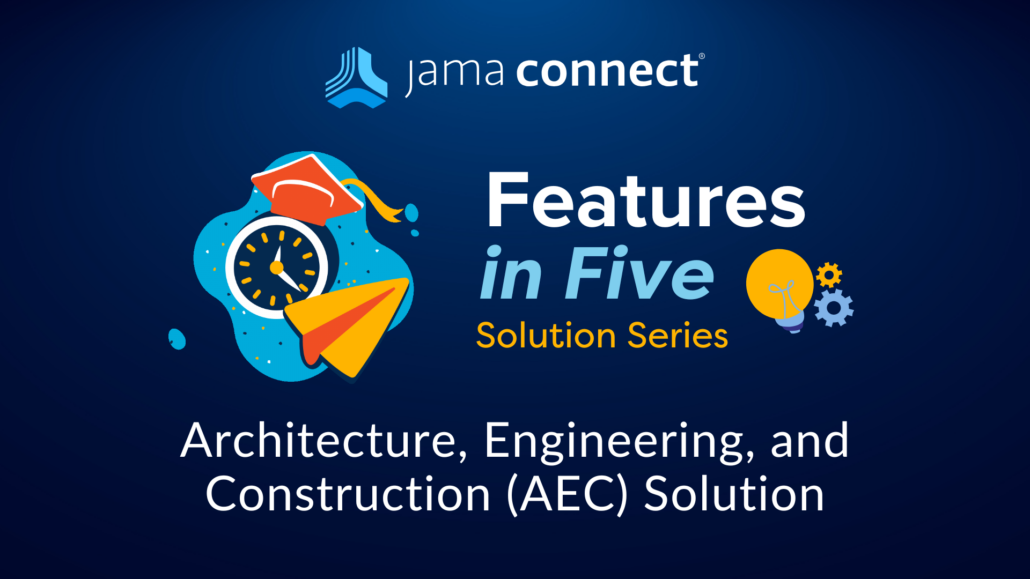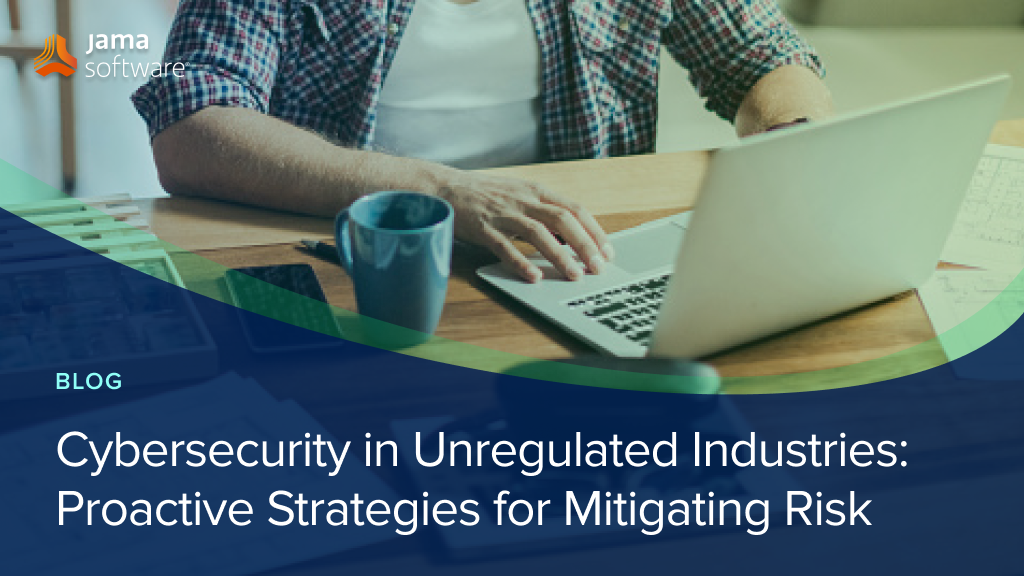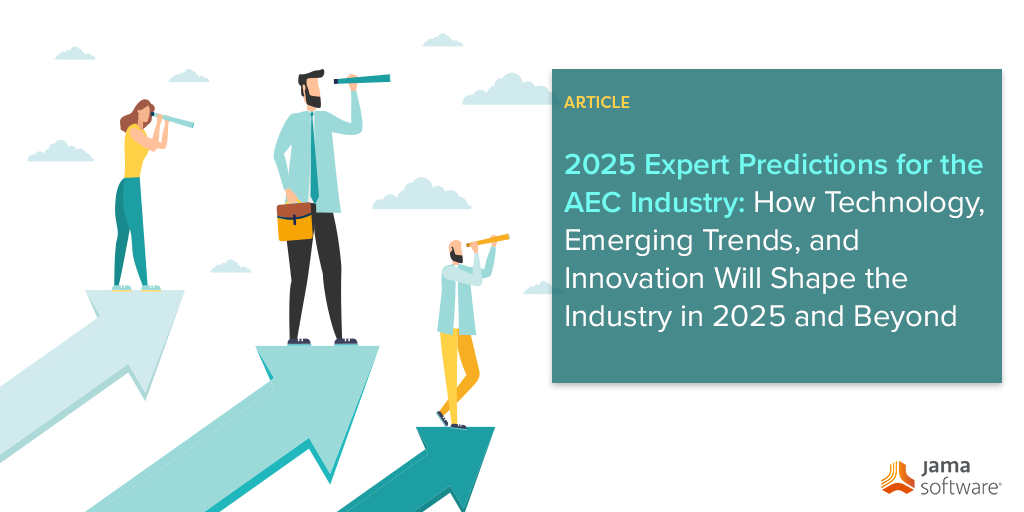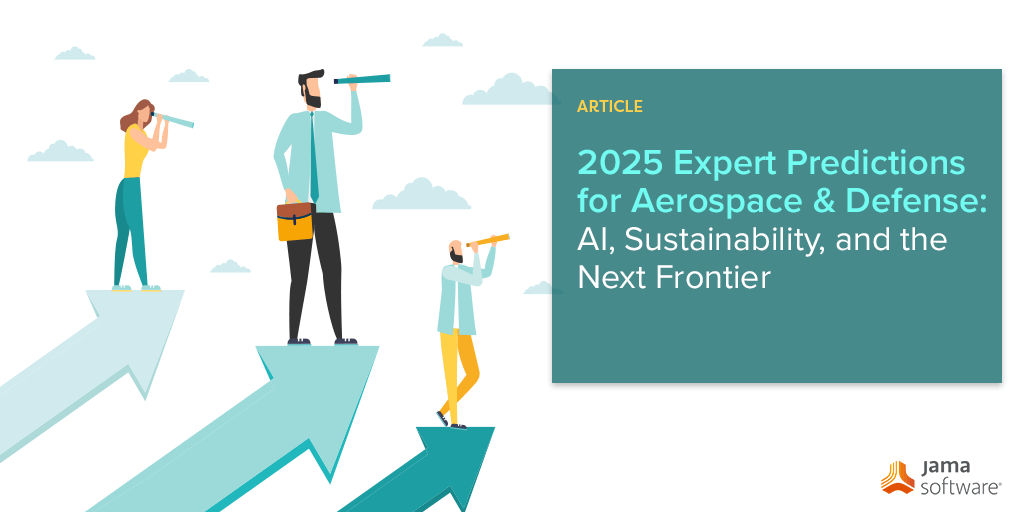In this blog, we recap our recent webinar, “Agile, Compliant, Competitive: Fast-Tracking Consumer Electronics Innovation”
[Webinar Recap] Agile, Compliant, Competitive: Fast-Tracking Consumer Electronics Innovation
Deliver Faster. Stay Compliant. Stay Ahead.
Overcome complexity in consumer electronics development without compromising quality.
In the race to bring innovative consumer electronics to market, even small delays can lead to lost revenue, missed windows, and a shrinking competitive edge. At the same time, fast-changing regulations, global supply chains, and growing demands around cybersecurity, sustainability, and safety are making development more challenging than ever.
In this webinar recap blog, join Jama Software experts Patrick Garman and Yannick Selg for a practical discussion on how to integrate compliance into your development workflow in order to achieve full traceability, streamline variant management, and speed up time to market.
What You’ll Learn
- Implement compliance as part of a unified workflow for a single source of truth
- Ensure end-to-end traceability, connecting supply chain inputs to requirements
- Manage product variants seamlessly with advanced reuse strategies
- Scale traceability across your entire digital thread for improved alignment
Patrick Garman: Hi, everyone, and welcome. Thank you for joining us for today’s session. Agile, Compliant, Competitive: Fast-Tracking Consumer Electronics Innovation. I’m Patrick Garman, and I manage professional solutions for consumer electronics here at Jama Software. I’m excited to be joined today by my colleague Yannick Selg, one of our Senior Solutions Architects. Together, we’ll explore what it takes to succeed in the fast-paced, high-stakes world of consumer electronics development.
The consumer electronics industry is one of the most dynamic out there, driven by innovation, defined by short lifecycles, and shaped by intense competition. A must-have device today can become obsolete in a matter of months. This creates enormous pressure, not just to innovate but to deliver quickly and get it right the first time. And development is no longer linear, it’s fast-paced, global, and layered. And while speed to market is essential, navigating the increasingly complex regulatory environment is just as critical. The bar for compliance isn’t just higher, it’s shifting under our feet.
So, here’s how we’re going to break this down today. First, we’ll explore how rapid innovation is reshaping development cycles and how teams can keep up without burning out. Then we’ll examine the regulatory landscape and what it takes to build compliance into your development process from the start. Next, we’ll look at the challenge of maintaining quality and compliance while accelerating delivery. We’ll share practical strategies and tools to help your teams move faster without compromising rigor, including how Jama Connect® supports modular design, regulatory traceability, and smarter collaboration.
Finally, Yannick will provide a live demo of Jama Connect, showing how our platform streamlines and accelerates your product development process without sacrificing quality. If there’s one message to take away today, it’s this. Innovation is not just about what’s new. It’s about navigating complexity with confidence. Developing innovative consumer electronics is difficult. Even under the best conditions, these products are incredibly complex. Even in a stable environment, managing requirements across disciplines, hardware, software, UX, compliance is challenging. But in reality, we’re rarely working in a stable environment. We are constantly navigating shifting market trends, emerging technologies, global supply chain fluctuations and evolving regulations. Add in social and geopolitical disruptions and it’s no surprise that teams often find themselves tripping over their own processes, not due to a lack of talent or effort but because the complexity outpaces the tools they’re using to manage it.
RELATED: The Top Challenges in Industrial Manufacturing and Consumer Electronic Development
Garman: Here’s what we often hear from customers before they adopt Jama Connect. Things like, “We keep building the wrong thing because requirements weren’t clear or accessible,” or, “Engineering is out of sync with compliance,” or, “We didn’t realize we missed a requirement until testing, or worse, after launch.” Sound familiar? These are not just anecdotes, these are measurable pain points. 62% of companies have been reprimanded or fined by regulatory agencies. 83% of design teams cite immature requirements management as the root cause of project failures. And roughly one-third of a typical product development budget is spent on unplanned work. Things like rework, defect resolution, or scrambling to address gaps that could have been caught earlier. And here’s the bottom line. A six-month delay can result in a 33% loss in potential revenue.
That’s not just a product issue; that’s a business issue. The takeaway is clear. Without a structured collaborative requirements management approach, you’re not just risking quality, you’re risking profitability, compliance, and your speed to market.
Let’s start with the simple truth. Speed matters. If you’re late to market even by a few months, you’ve already lost ground, lost revenue, lost mindshare, and lost relevance. But here’s the challenge. Today’s breakthrough is tomorrow’s baseline. Innovation doesn’t slow down. The pressure to stay ahead pushes teams to take risks and move fast. But fast alone is not enough. Today’s development isn’t clean or consequential. It’s global, concurrent and complex. Hardware might be built in one country, software in another with compliance teams spread across all time zones. All of that coordination has to happen in real time. Meanwhile, regulations might evolve mid-cycle. A product that met requirements at design freeze may fall out of compliance before it ships. That finish line keeps moving. So yes, fast is good, but flawless is better. Success means not just getting to market, but getting there with a product that meets expectations across the board; technical, legal and consumer. That’s what we’ll unpack throughout this session. How to balance agility with accuracy and move quickly without breaking things.
We’re developing products in a world where innovation is constant and accelerating. AI, automation, personalization, these aren’t high-end features anymore. They are expected. Devices are no longer isolated, they’re connected, adaptive and increasingly intelligent. This raises the bar and the complexity. Development cycles are now parallel, not sequential. Hardware, firmware, AI models, mobile apps, supplier planning, everything is happening at once and feeding into each other. The only way to manage this pace is with agile cross-functional workflows. Compatibility is another hurdle. Whether it’s Matter, Alexa, Google Home, your product must play nicely in a connected ecosystem. Standards like USBC don’t just reflect technical choices that reflect regulatory pressure and consumer expectations.
And it’s not just technology that’s shifting. The market itself is transforming. Boundaries between industries are disappearing. A fitness tracker is now a health monitor and a social device. Do self-driving cars belong to the automotive industry or consumer electronics? That blurring of categories brings new competition and new risk. Add to this geopolitical disruption, chip shortages, trade regulations. And you’re not just designing for a performance, you’re designing for resilience. The takeaway? Speed still wins, but only when it’s paired with flexibility. It’s time to stop asking how fast can we ship and start asking how well can we adapt? Of course, building great products is hard. Making them legal, safe and certifiable, even harder. Regulatory complexity isn’t just growing, it’s fragmenting. Every region brings a different rule book. Europe has CE Marking, RoHS, REACH and the WEEE Directive. And now, the Cyber Resilience Act and AI Act are adding new layers of cybersecurity and transparency expectations.
The U.S. is more decentralized. The FCC rules govern emissions. UL handles safety. And states like California are adding laws like CCPA that impact product labeling and data handling. China requires CCC certification, local testing, cybersecurity reviews, and strict data localization policies. And that’s just a few markets. Here’s the kicker. Even a minor design change like swapping out a chip can trigger retesting and recertification. That’s time, money, and launch risk. So, compliance is not a checklist, it’s a discipline that has to be embedded from the beginning. Get it right and you move confidently. Get it wrong and you risk delays, recalls, fines, or even exclusion from key markets. To be clear, in this industry, compliance is a product feature.
RELATED: Eliminate Gaps and Risks with Proven Traceability Best Practices
Garman: We’ve all heard the phrase “move fast and break things,” but in regulated high-stakes product development, that mindset can backfire. Yes, speed to market is important. Yes, regulatory compliance is non-negotiable. But getting there first with a buggy product, that’s a fast track to customer dissatisfaction and reputational damage. As this chart illustrates, the later a defect is found, the more expensive it is to fix, not just in dollars but in lost time and market opportunity. A defect that’s missed in integration testing might cost 40 times more to resolve in system testing. If it makes it to acceptance testing, that cost jumps to 110 times. And if the issue is discovered after launch, you’re not just paying in engineering hours, you’re paying in trust. That’s why verification and validation can’t be an afterthought. They must be built into every phase of development. And quality is not just about testing. It starts with the clarity and completeness of your requirements. Are your teams writing precise, actionable requirements? Do you have traceability across development artifacts to ensure nothing is missed? Do you have review stage gates with all stakeholders? That means bringing in legal, compliance, security and business teams early, even if you think they’ll just slow things down.
High-performing teams invest in both product quality and process quality because the cost of getting it wrong grows with every step forward. So, the question isn’t speed, compliance or quality, it’s how do we build all three into our process so that we can control complexity before it controls us. This means breaking down silos. Engineering, compliance, manufacturing, support, these teams can’t operate in isolation. They need shared visibility and synchronized workflows. Provide visibility and transparency early and you’ll discover what you don’t know much faster and avoid having to backtrack later when it’s more expensive. And reuse what works. You don’t have to start from scratch each time. You can reuse validated IP, swappable components with their requirements and even test cases to move faster without increasing risk.
Testing also has to evolve. Coverage gaps are the silent killers. Traceability from requirements to validation ensures you’re testing the right things and finding gaps before your customers do. And testing should be continuous, not a final step. Validation is part of development, not the end of it. The bottom line: speed without structure is guesswork. Speed with discipline is leadership. So, how do you implement all of this? That’s where Jama Connect comes in. Jama Connect is purpose-built to help consumer electronics product teams move faster while staying aligned and compliant.
Here’s how. Streamlining your regulatory compliance. Jama Connect enables teams to reuse standards across projects and push updates automatically from a central source of truth. And track which projects are falling behind or are out of compliance using comparison views. For modular design and reuse, standards are not the only reusable artifacts in Jama Connect. Library projects allow you to easily manage requirements for reusable or swappable components and product variants, complete with linked test cases.
RELATED: IEC 61508 Overview: The Complete Guide for Functional Safety in Industrial Manufacturing
Garman: Reuse accelerates development and reduces redundant validation so you can focus on what’s truly new. Jama Connect also supports you in spreading your traceability across the digital thread. You can create a real-time data connection between Jama Connect and Jira using Jama Connect Interchange™ to trace requirements to development activities and have the current status for all tasks visible with your requirements. Also, Jama Connect’s best-in-class REST API extends that interoperability even further across your toolchain. You get end-to-end traceability from ideation to requirements to tests from risks to releases. Jama Connect also builds in quality insights. Tools like Live Trace Explorer™ show where your project has trace gaps or low maturity and provides you with a score for your project coverage completeness. Jama Connect Advisor™ provides real-time guidance on requirement clarity, helping you catch issues before they cascade and quantifies the maturity of your requirements so that you can measure improvement.
With Jama Connect, you’re not just documenting development, you’re orchestrating it. You gain clarity, reuse what works, integrate where it counts and stay compliant without losing speed. In fact, this is a great time to turn things over to Yannick to show us what this looks like in action.






![[Webinar Recap] Systems Engineering MedTech Challenges [Webinar Recap] Systems Engineering MedTech Challenges](https://www.jamasoftware.com/media/2025/02/Systems-Engineering-MedTech-Challenges.png)


